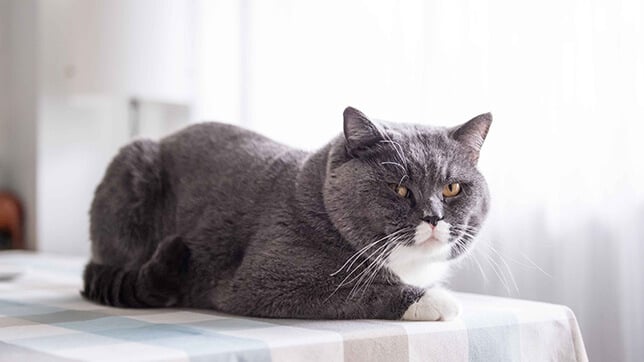26th October 2021
Cats can be extremely volatile, like a ticking time bomb… they may go from cute and fluffy, to angry minions of darkness in 0.01 seconds. But, we love our furry friends nonetheless, and nobody knows your cat’s purr-sonality better than you do.
If you’ve never owned a cat before, and you’ve just introduced a new family member into your home, there may be some signs that could be mistaken for happy behaviour, when actually your pet is in distress.
So we have put together this list to help you recognise the common signs – it’s not exhaustive and every cat has a different quirky personality, but use it as a basis to learn the common signs for what your cat may be trying to communicate with you:
Facial expressions
Ears
Although they are usually subtle movements, ears can signify tell-tale signs of your cat’s emotion.
If they are rotated backwards, your could be irritated by something (often accompanied with a wagging tail) or simply just getting a better listen of whatever noise has caught their attention behind them. Flat, pinned back ears are unmistakable, however, your cat is frightened or threatened.
Eyes
You might have noticed your cat’s eyes half closed and blinking in slow motion. This is a great sign that they are totally content with your company and trust you!
Wide open eyes with pupils that dilate quickly mean your cat is in “predator” mode and are ready to pounce at any second. Whereas a cat with a furrowed brow, slit eyes and direct stare are not happy at all and are angry, threatened and defensive. Leave a cat who is showing these signs alone as you will likely get swiped.
Mouth/Vocals
Did you know that adult cats very rarely meow to other cats? They only meow at humans to demand food, demand strokes or just simply to be chatty.
There are so many different types of meows, but the most common identifiable ones are:
- the friendly greeting which is identified by short, quick, high-pitched “chatty” meows
- the warning, characterised by a low growling or drawn out low-pitched meow
- the “DO NOT COME ANY CLOSER” signs include howling, hissing, spitting, and baring all teeth.

Body language and posture
Tail
The tail is a strong indicator of how a cat is feeling.
If it’s held high and ‘quivering’, he or she is very happy to see you! If the tail has formed a question mark shape, it is self-explanatory – your cat is curious and unsure of how they feel.
A wagging/swishing movement, however, indicates that they are irritated, and if this turns into the classic ‘bottle brush’ your cat is very unhappy and needs to be left alone.
Paws and Claws
Why do cats knead? There are a lot of interesting theories, for example, that a kitten or cat will knead as it is very similar to the motion of nursing its mother, which is associated with comfort and happiness.
So you may be suffering from lots of scratches (the harder the knead, the happier they are) but know that at least your cat is having a lovely time!
You may also notice that your cat leaves sweaty paw prints behind, this usually means they are stressed/scared.
Body
The classic angry cat sign we all recognise is the arched back, with fur standing on end. However, an arched back accompanied with purring and rubbing against your leg can indicate a happy cat (who probably just wants food or is simply marking his/her territory…who knows if our feline friends really love us after all).
Other things to look out for:
- An exposed belly does not necessarily mean ‘pet me’ – it could mean ‘I want to play fight’… so approach with caution!
- If your cat is leaning away from you and trying to hide, give him/her space, as she is likely feeling stressed or scared.
- Louder purring may also increase in a cat experiencing pain and will be more likely to bite. NEVER use human pain relief for cats. Always call your vet if you think your cat is in pain.
Read our cat blog!
If you found this article useful, why not visit our cat blog for more news, insight and opinion pieces?
Need cat insurance?
Cat insurance can help cover the cost of veterinary treatment if your cat gets injured or falls ill.
